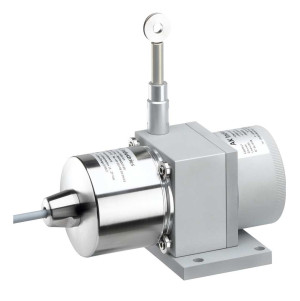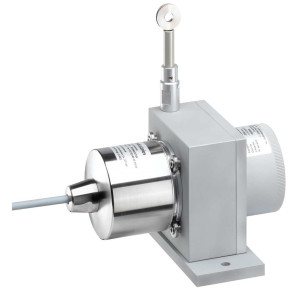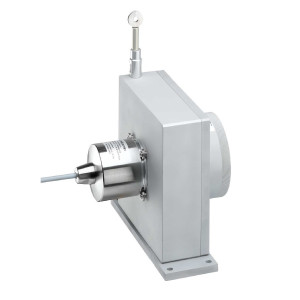String Pots – Absolute Output

Absolute output draw-wire sensor

Absolute output draw-wire sensor

Absolute output draw-wire sensor

Absolute output draw-wire sensor
Learn about absolute encoders with retained position memory, digital protocols (SSI, CANopen, Modbus), and applications in safety-critical systems.
An absolute output string potentiometer, also called an absolute string encoder, measures linear position using a retractable cable and outputs a signal that represents the exact position of the string—even after a power cycle. Unlike incremental types, it does not lose its position on power-off.
As the string moves, it rotates an internal absolute encoder or sensor. This encoder outputs a unique digital or analog signal for each position, enabling your system to know the exact location without needing a homing sequence.
Absolute string potentiometers can output: Digital protocols like SSI (Synchronous Serial Interface), CANopen, Profibus, or Modbus, Analog absolute signals like 0–10V or 4–20mA (scaled to a fixed range), Some may offer PWM or serial UART for embedded applications.
Absolute output provides a unique position value at all times—even after power loss. Incremental output gives pulses that require counting and referencing at startup Absolute sensors are ideal when you need fail-safe position feedback without re-zeroing.
Key advantages include: Retained position after power-down, No need for homing routines, High reliability and repeatability, Better suited for safety-critical or multi-axis systems, Easy integration with modern digital control systems.
Yes. Many models offer 12-bit to 16-bit resolution (or better), with linearity errors as low as ±0.05% of full scale. This makes them ideal for precise position control over large ranges.
Most digital-output models operate on 5V, 12V, or 24V DC, depending on the protocol and electronics. Always verify voltage and communication specs before connecting to a controller or bus system.
Absolute string potentiometers are available in ranges from just a few inches up to 50 feet (15 meters) or more, depending on the model. Despite the name, they're not limited to short distances.
These sensors are ideal for: Heavy equipment and mobile machinery, Aerospace and defense systems, Factory automation, Test stands and structural monitoring, Robotics and medical devices. Basically, anywhere you need reliable, exact position feedback with no loss of data.
Yes. Many models feature sealed enclosures (IP65–IP67), vibration-resistant housings, and extended temperature ratings. Some are designed to meet harsh environment or military-grade standards.